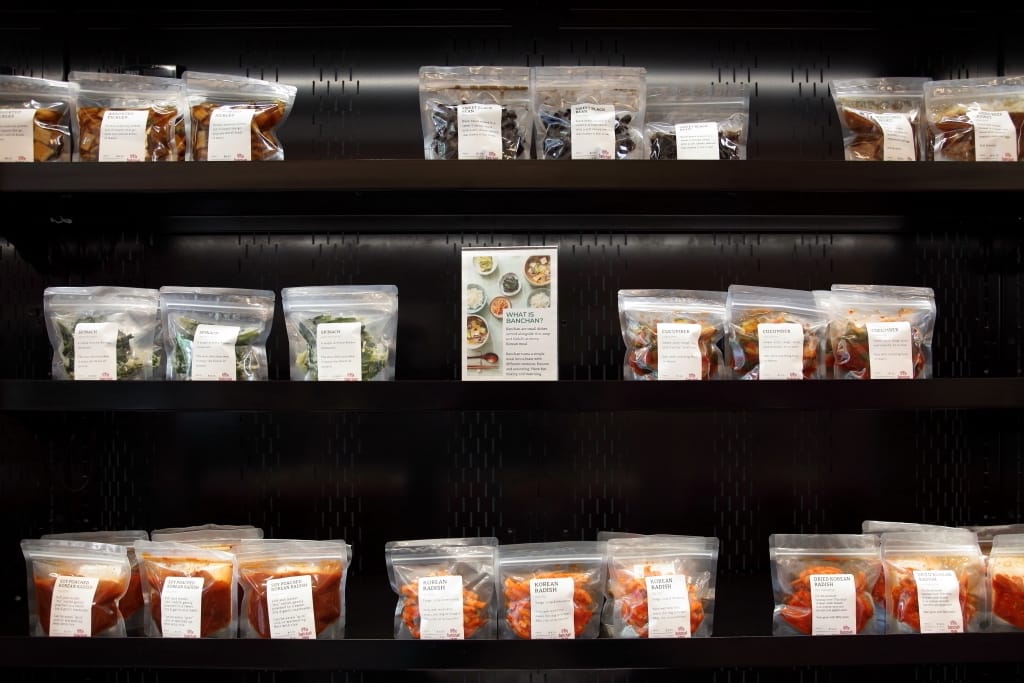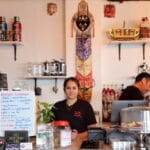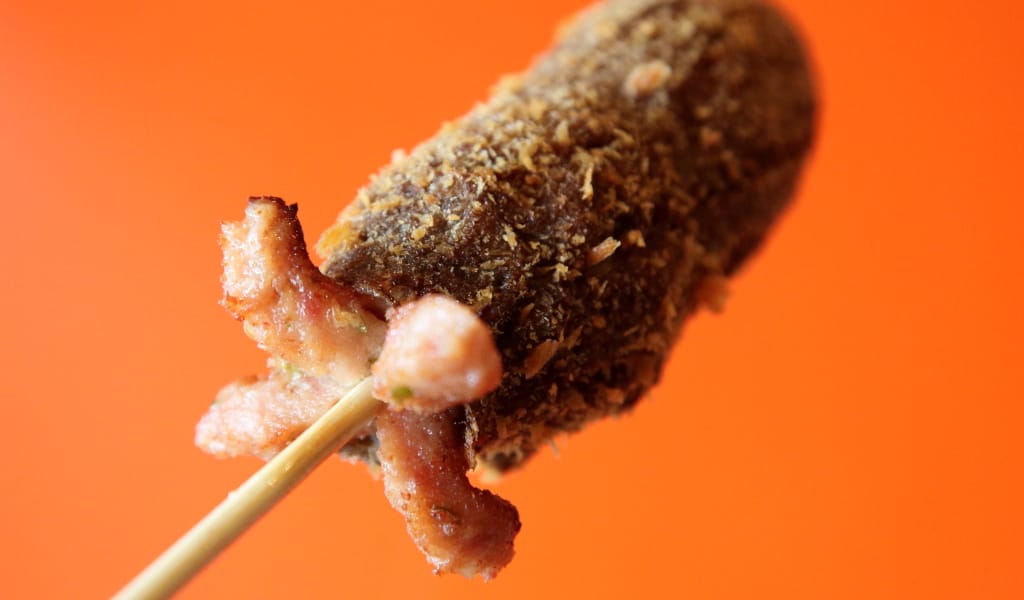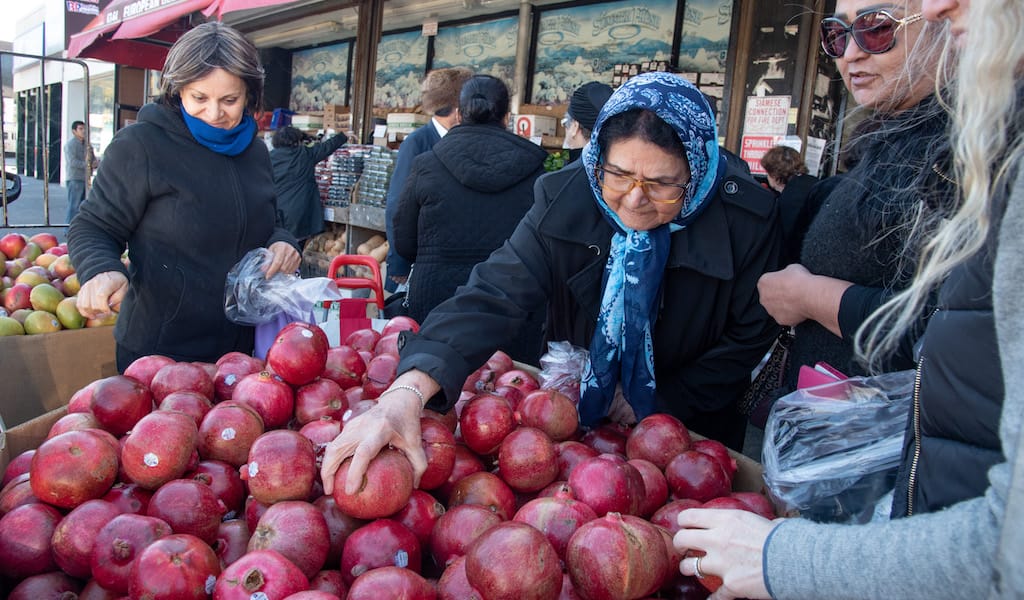We’d always thought of banchan (bahn-chahn) simply as the numerous small dishes that arrive, unbidden, to surround the main courses at a Korean restaurant meal. But until we sat down with Hooni Kim and Catharine Chang at Little Banchan Shop, in Long Island City, we didn’t fully understand their central role in Korean cuisine – not only in public settings but also in the home.
Hooni, a chef and restaurateur, opened Little Banchan Shop in August 2022. Catharine, who practiced corporate law in a past life, manages the front of the shop while Hooni presides in the kitchen. The main room is a simple oblong – bright, sparingly decorated, well-stocked yet uncluttered, with a “huge window into our kitchen,” notes Hooni, so customers can see that the banchan is made in-house. Banchan, in this sense, refers not only to small dishes of fermented, marinated, steamed, simmered or stir-fried items but also soups, stews and entrees – anything that can be stored in the home fridge and portioned out as needed. Hooni has about 80 different banchan in his repertoire, several dozen of which are on offer at any one time.
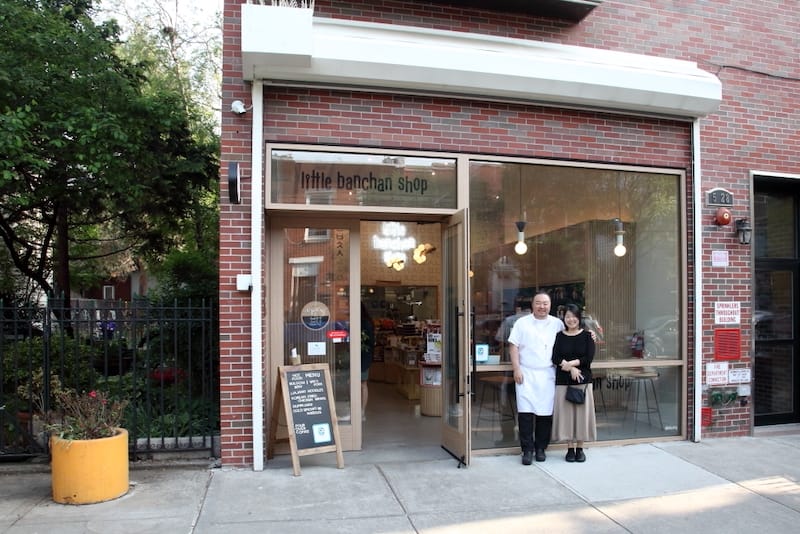
Interspersed among the products are signs written by Catharine present the basics of banchan, to which she adds her own sunny encouragement and guidance. “When you eat it with rice, banchan is the star,” she tells us. “A warm bowl of rice” really brings out the flavors, Hooni adds. (Ruefully, we think back to all the restaurant meals when we ignored the rice and so didn’t experience the banchan at their best.)
Little Banchan Shop also stocks a a few select foods imported from Korea, as well as a variety of locally made accompaniments to a meal such as sodas, ice creams and chocolates. Near the checkout, we spotted Starburst candies, too, in a take-one bowl. (OK, we took one of each flavor.)
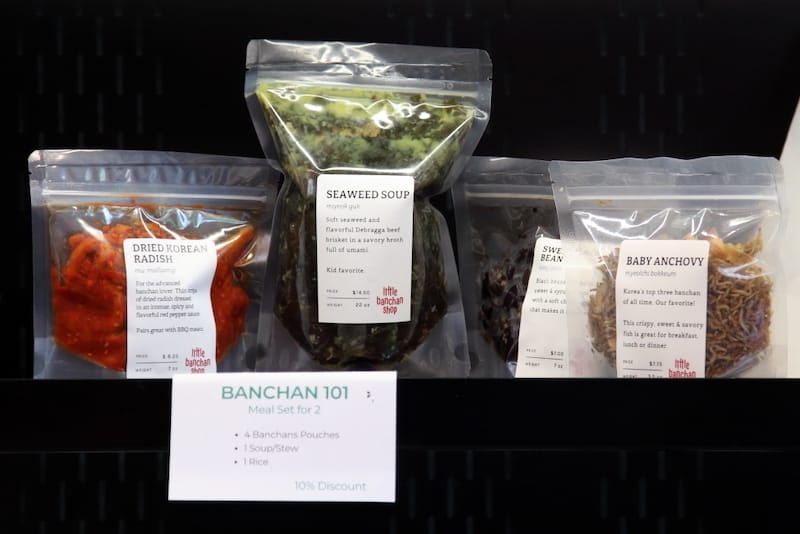
With their teenaged son, Hooni and Catharine live on a quiet street not far from their shop. Both were born in Seoul, in the 1970s, and have spent their adult lives in the United States, for the past ten years or so, in Long Island City. It’s a diverse and largely residential Queens neighborhood that’s much less well-known for Korean food than Murray Hill. A community garden and a playground are just down the block; only a short walk away, Gantry Plaza State Park offers spectacular views of Midtown Manhattan across the East River.
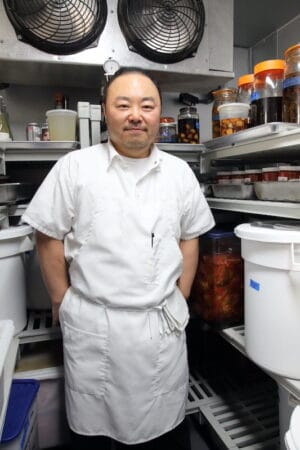
To be sure, however, Hooni built his reputation in Manhattan restaurants. He cooked in a fine-dining environment for years – at the French restaurant Daniel and the Japanese restaurant Masa, both of which earned three Michelin stars in New York City – before opening what he calls a “very casual restaurant,” Danji, in Manhattan in 2010. Hooni’s self-assigned role “was to reach as many people as I can” with Korean cuisine, and to be “affordable.” In 2012, Danji won its own Michelin star – the first for any Korean restaurant.
Hooni recognized, however, that even a Michelin-starred establishment can reach just so many people. While opening a second restaurant, Hanjan, he also worked on a cookbook that, he hoped, would not only expose more people to Korean cuisine but also encourage readers to prepare it at home. My Korea: Traditional Flavors, Modern Recipes was published in April 2020, shortly after Covid largely closed down New York City dining. Danji survived the pandemic, but Hanjan did not. And the cookbook, though very well received, didn’t seem to inspire a wave of Korean cooking among its readership. “Coming home from work and making dinner is tough,” Catharine acknowledges.
Little Banchan Shop, Hooni tells us, “bridges the gap” between his book and his restaurant – it helps Hooni and Catharine to deepen the appreciation for Korean cuisine in a home setting.
“Traditionally, every food that was harvested” in Korea, Catharine tells us, “all the surplus, would be preserved.” A “friendly competitiveness,” Hooni adds, would develop among the women of a community. Families would buy various banchan from their favorite purveyors to store at home, then mix and match these shareable items to make each meal. “Some would last for months,” says Catharine, “some would last for years.”
Later Hooni led us downstairs to his walk-in kimchi refrigerator. The name kimchi refers to any number of vegetables – most famously, napa cabbage – that are preserved by being salted, seasoned and fermented. Each of the containers in Hooni’s fridge, from modest-sized jars to enormous tubs, is labeled with the date that its contents were preserved. The longer the fermentation, the more pronounced the flavor.
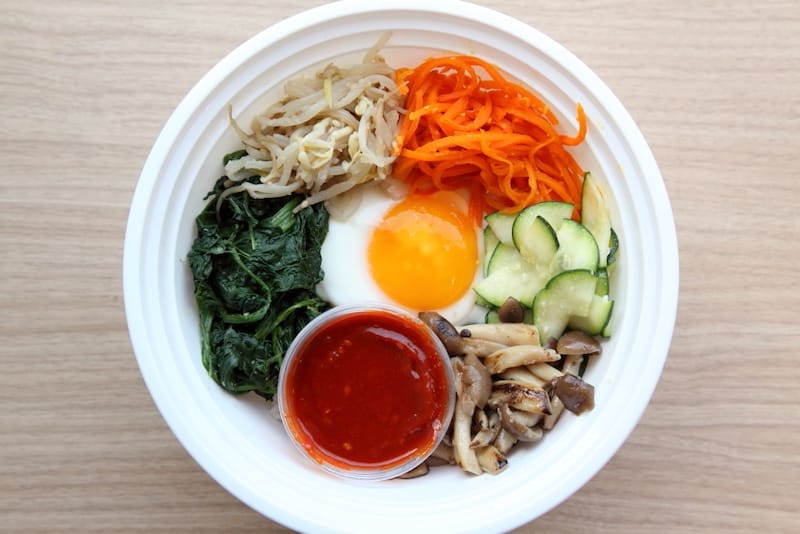
The three most essential Korean seasonings – doenjang (soybean paste), ganjang (soy sauce) and gochujang (chili paste) – are fermented, too. Hooni imports his from a Korean farm, Jookjangyeon, and praises their depth of character. Alone or in combination, these jangs add umami – and often an intangible oomph – to many of the shop’s banchan.
Everything that comes from the kitchen is “made with good ingredients,” Hooni stresses, using “no preservatives or chemical additives.” He sources his meats domestically from D’Artagnan, DeBragga and Niman Ranch, and much of his produce is grown on local farms.
We imagine that some less common produce – such as the ramps that were steeping inside the walk-in fridge – are destined for Hooni’s small tasting-menu restaurant, Meju. The restaurant, whose entrance is nearly hidden to one side of the kitchen, is named for the bricks of boiled, mashed soybeans that, when fermented, can be transformed into the three jangs. For the tasting menu, these seasonings are made by Hooni himself, during periodic visits to Korea, under the guidance of a longtime mentor. Meju’s dining room is lovely, but the tasting menu is beyond our usual budget.
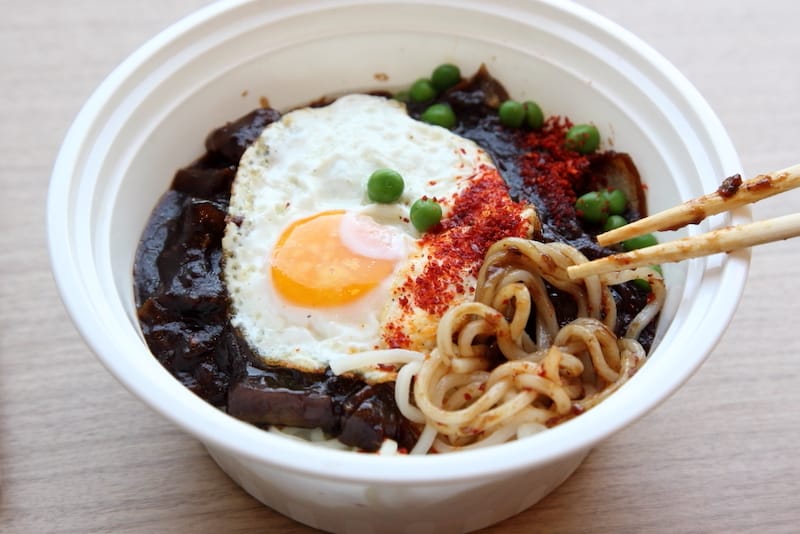
We have sat down at the shop’s windowside counter for a bowl of jjajangmyeon. Both principal ingredients, pork-enriched black bean sauce and wheat noodles, appear on the shelves, but jjajang noodles are among the few dishes that Little Banchan cooks to order for consumption at the shop. We’ve tried it several times in New York under the name zhajiangmian – the dish has Chinese roots – but never found a better one.
Another day we enjoyed a bowl of bibimbap, cooked rice (bap) that is topped and eventually mixed (bibim) with a variety of ingredients, in this case a fried egg, gochujang, spinach, sprouted mung bean, carrot, zucchini and mushroom. Only the spinach, Catharine informs us, is currently sold as a banchan, but at least we got into the spirit of partnering it with rice.
Although we ate our bibimbap by the window, we might easily have carried it, or any of several other grab-and-go dishes, to Gantry Park and eaten by the river. As we left the shop, two young girls on scooters rode by in the direction of the park, followed at a short distance by two fellows on foot (their dads, we imagine). The fellows paused at the shop entrance, and one called out, “Wait, girls! We’re going to look in here.” The girls scootered back.
Published on June 09, 2023
Related stories
November 14, 2023
QueensJust to the east of Flushing, the home of New York City's largest and fastest-changing Chinatown, is a sprawling neighborhood that boasts many of the city's most interesting Korean restaurants and food shops. We hesitate to call it a Koreatown. Compared with the few dense blocks of Manhattan's Koreatown, this part of Queens has a…
October 4, 2023
Queens | By Melanie Einzig
QueensHome to countless immigrant stories, Queens is the most diverse borough in New York City, with over two million people, half of whom were born outside the United States. So it’s no surprise that the area’s markets – some sprawling, many more pocket-sized – are equally as diverse, serving immigrant communities both old and new. We…
May 16, 2023
QueensQueens Boulevard, a major thoroughfare that cuts through the heart of the borough, accommodates many lanes of automobiles traveling to and from Manhattan. Some eateries that flank it seem geared for auto traffic, too: One stretch of roadway, in Elmhurst, sports a classic diner, an Argentine steakhouse and a fast-food restaurant marked by golden arches.…







































